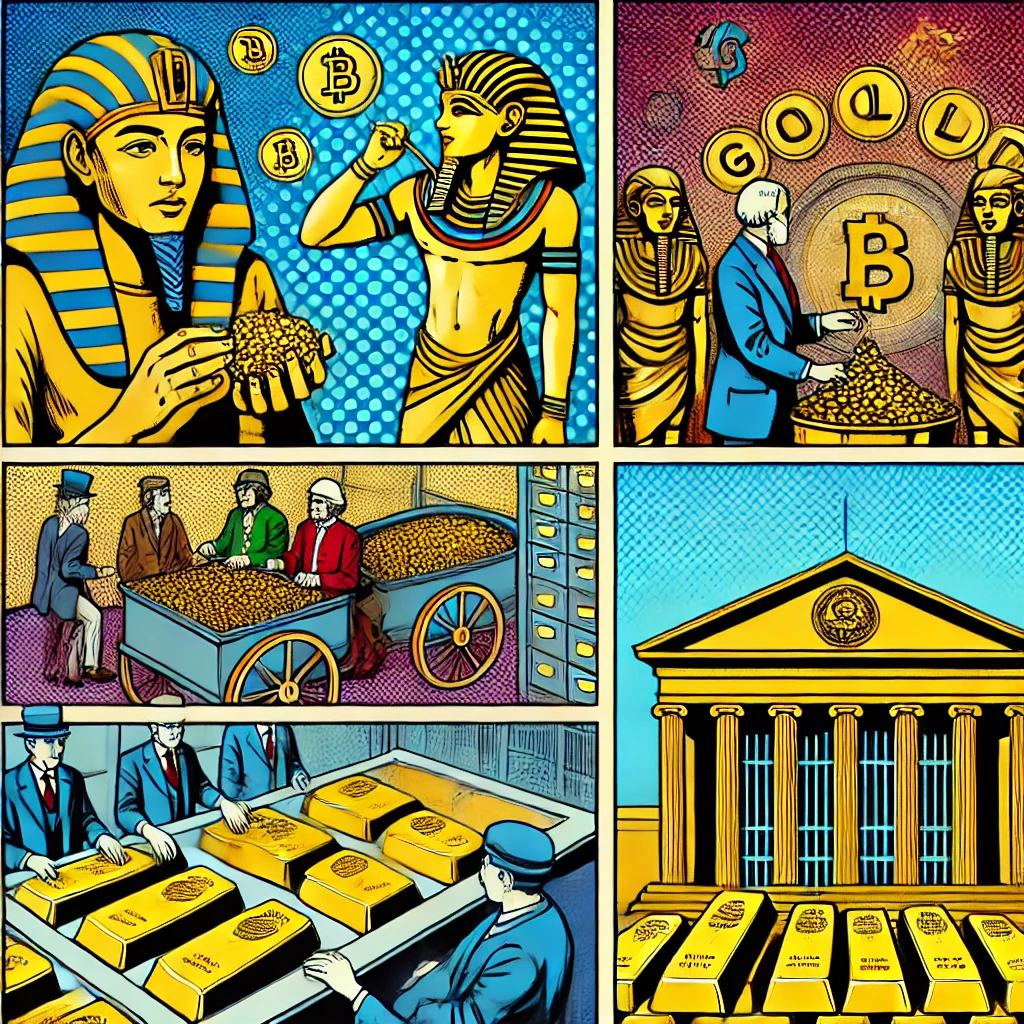Gold Standard Bretton Woods Reserve Currency
The History of Gold as a Reserve Currency
Gold has played a pivotal role in global economics for thousands of years, serving as a cornerstone of monetary systems and a trusted store of value. Its intrinsic qualities—durability, divisibility, portability, and scarcity—have made it a preferred medium of exchange and a reserve asset. This blog post explores the fascinating history of gold as a reserve currency, its evolution, and its enduring relevance in modern financial systems.
Ancient Beginnings
Gold’s status as a store of value dates back to ancient civilizations. The Egyptians, Mesopotamians, and Indus Valley societies all revered gold, not only for its beauty but also for its rarity. By 1500 BCE, gold was being used as currency in Egypt, and it became a symbol of wealth and power across empires.
The Lydians, an ancient Anatolian civilization, are credited with minting the first gold coins around 600 BCE. These coins facilitated trade and established gold as a standardized monetary unit, paving the way for its role in economies worldwide.
The Gold Standard Emerges
Fast forward to the 18th and 19th centuries, when gold became the backbone of international monetary systems. The gold standard was formalized, requiring countries to tie their currency to a specific amount of gold. The British pound, backed by gold reserves in the Bank of England, became the world’s reserve currency during the height of the British Empire.
The United States adopted the gold standard in 1834, pegging the dollar to a fixed amount of gold. This system provided stability, as currency values were tied to a tangible asset, reducing inflation and fostering international trade.
Bretton Woods Agreement and the End of the Gold Standard
Following World War II, the Bretton Woods Agreement of 1944 established the U.S. dollar as the world’s primary reserve currency, convertible to gold at a fixed rate of $35 per ounce. This arrangement ensured global economic stability by linking other currencies to the dollar, which was backed by gold.
However, as global trade expanded and U.S. gold reserves dwindled, the system became unsustainable. In 1971, President Richard Nixon ended the dollar’s convertibility to gold, marking the demise of the gold standard. This shift ushered in the era of fiat currencies, where the value of money is determined by government decree rather than a physical commodity.
Gold in Modern Financial Systems
Despite the abandonment of the gold standard, gold remains a vital component of central bank reserves. It serves as a hedge against economic uncertainty, inflation, and currency devaluation. Countries like the United States, Germany, and China hold significant gold reserves to bolster confidence in their monetary systems.
Gold also plays a critical role in diversifying investment portfolios. Its negative correlation with traditional financial assets like stocks and bonds makes it a safe haven during economic downturns. The rise of exchange-traded funds (ETFs) and digital gold investment platforms has further increased gold’s accessibility to individual investors.
The Future of Gold as a Reserve Asset
In a rapidly changing global economy, gold continues to symbolize stability and trust. While cryptocurrencies and digital assets are gaining traction as alternative stores of value, gold’s unique combination of historical significance and tangible worth ensures its relevance. Central banks worldwide are increasing their gold reserves, signaling its continued importance in financial systems.
As geopolitical tensions, inflation, and economic uncertainty persist, gold’s role as a reserve currency—though not in its traditional form—remains unchallenged. Its legacy as a symbol of wealth, security, and enduring value ensures it will continue to shine brightly in the global financial landscape.
Conclusion
From ancient Egypt to modern central banks, gold’s journey as a reserve currency underscores its timeless appeal. Its ability to store value and provide financial stability has made it a cornerstone of economic systems for millennia. While the world has moved beyond the gold standard, the metal’s significance as a reserve asset remains as vital as ever. As we navigate an uncertain economic future, gold’s legacy as a symbol of stability and security endures.
